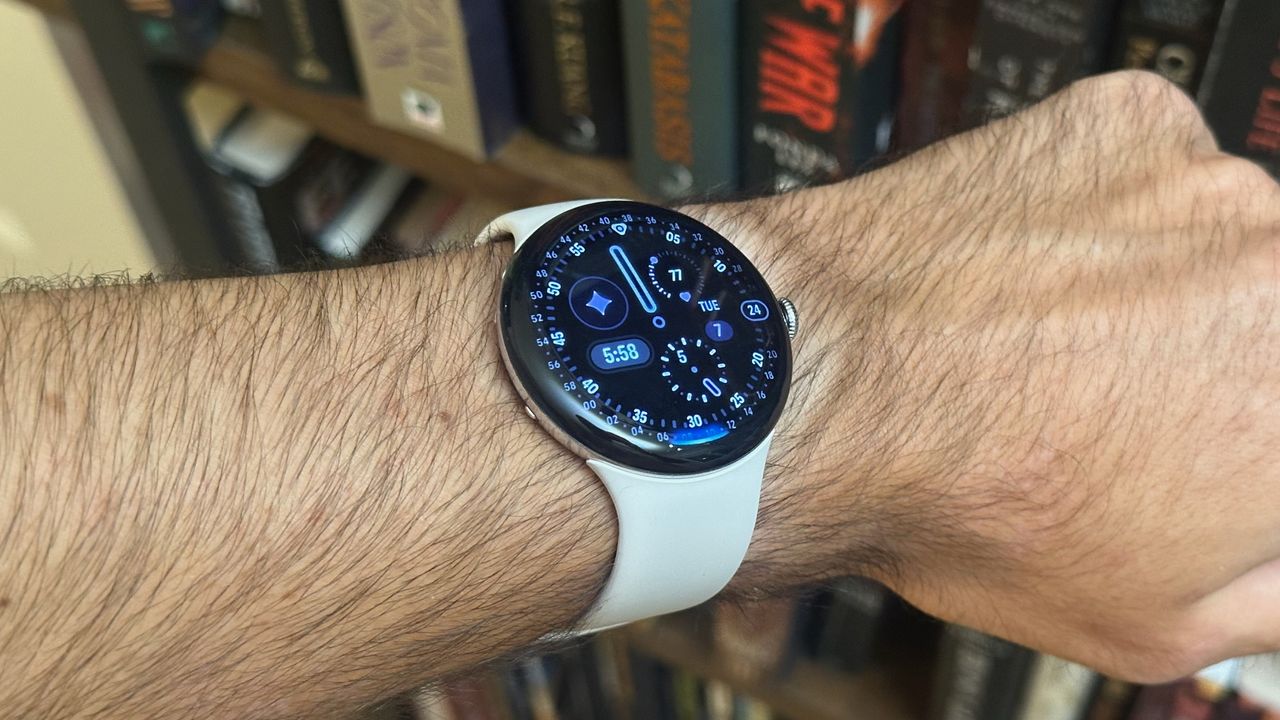
What seemed repetitive at first glance has turned out to be a fantastic year-over-year upgrade. Our Google Pixel Watch 4 review praises the wearable for its polished software, excellent hardware, and improved repairability. Clearly, Google is on the right track, introducing a wide range of upgrades like Wear OS 6, a larger and brighter Actua 360 display, Gemini built-in, and a lot more. The Pixel Watch 4 is second only to the Galaxy Watch 8, earning it the title of the second-best Android smartwatch of 2025.
The bezels of the Pixel Watch 4 appear much thinner now, and there are other noteworthy upgrades like the Snapdragon W5 Gen 2 chipset for better performance, a 25% longer battery life, satellite SOS messaging without your phone, dual-frequency GPS, and a Gemini-based health coach. This isn't an exhaustive list; there's so much more to uncover!
This Google Pixel Watch 4 buying guide will run through release date, pricing, colorways, upgrades over the Watch 3, and every new feature that you'll want to try.
For more news and information on Google's latest smartwatch, check out our Ultimate Guide.
Google Pixel Watch 4: Price and release date
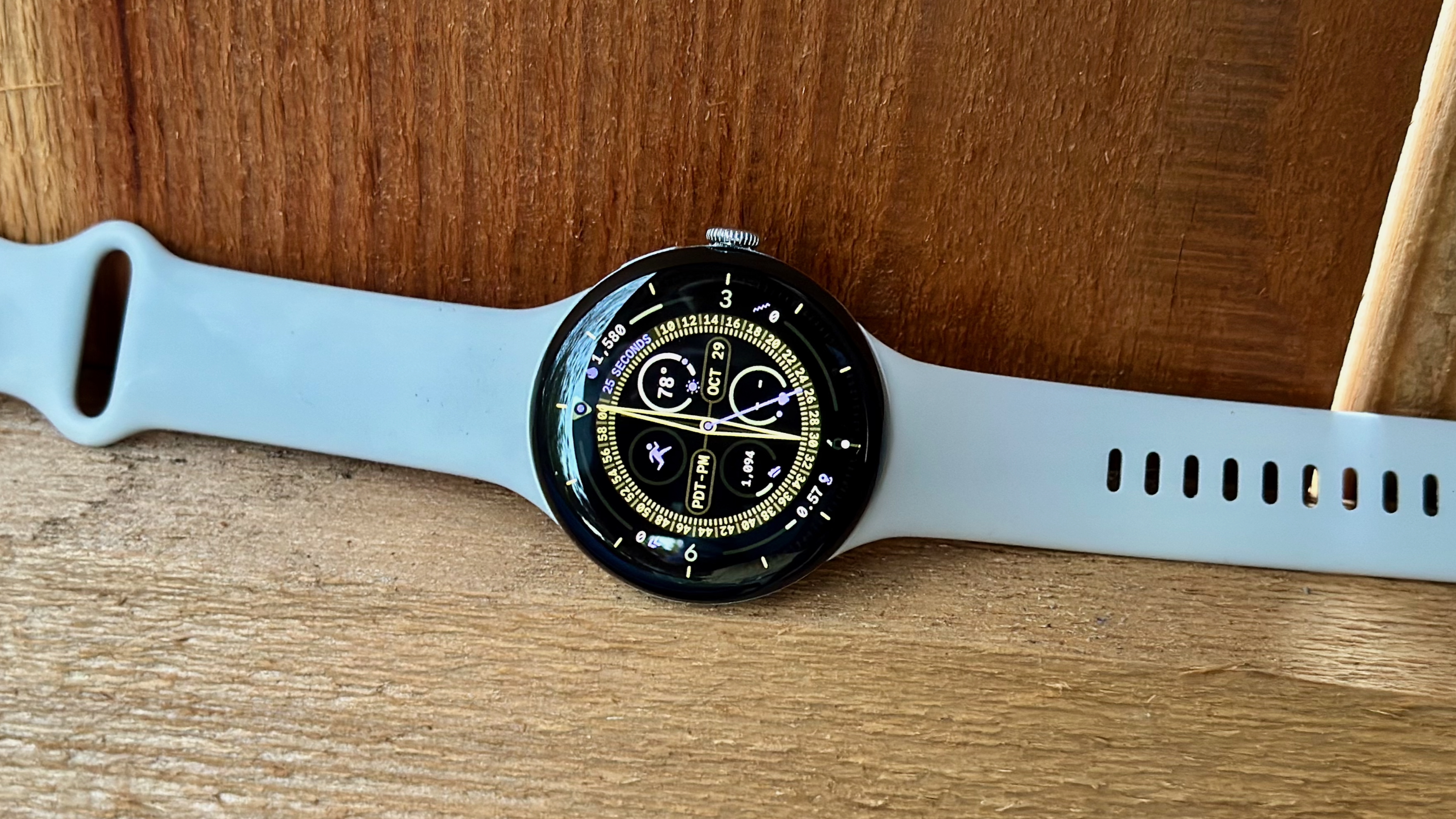
Officially announced on August 20, the Pixel Watch 4 started shipping on October 9. Both the 41mm and 45mm size variants of the Pixel Watch 4 come in Matte Black or Polished Silver; the smaller model also comes in Champagne Gold (41mm), while the 45mm Watch 4 is available in Satin Moonstone. If you're confused about the colors and sizes, we have a colorway guide that you can read.
The pricing hasn't changed from the Watch 3: The petite Pixel Watch 4 41mm costs $349, or $449 for the LTE version. Meanwhile, the larger Pixel Watch 4 45mm costs $399 or $499 with cellular.
The Pixel Watch 4 is bundled with Google's standard fluoroelastomer Active band. It also sells several alternative bands: Active Sport (silicone), Woven (recycled yarn), Gradient Stretch (elastane and recycled polyester yarn), Performance Loop (polyester, nylon, and elastane), two-tone or crafted leather (Italian leather), and Metal Mesh / Links / Slim (stainless steel). You can also purchase first-party and third-party band options for the Watch 4.
Google Pixel Watch 4: Specs
Specs |
Google Pixel Watch 4 |
|---|---|
OS |
Wear OS 6 |
CPU |
Snapdragon W5 Gen 2, Cortex M55 co-processor |
Display |
Actua 360 AMOLED LTPO display, 320ppi 3,000 nits, 1-60Hz refresh rate |
RAM / Storage |
2GB + 32GB |
Connectivity |
Bluetooth 6, Wi-Fi 2.4/5GHz, NFC, UWB, LTE (optional), dual-frequency GPS, Galileo, Glonass, (ROW) Beidou, QZSS, Navic, Satellite SOS, |
Sensors |
Compass, altimeter, barometer, magnetometer, 3-axis accelerometer, gyroscope, ambient light, multi-path optical heart rate sensor, cEDA, SpO2, ECG, far field skin temperature sensor |
Battery |
41mm: 325mAh, 30 hours with AOD, 48 hours with Battery Saver 45mm: 455mAh, 40 hours with AOD, 72 hours with Battery Saver |
Charging |
41mm: 15 minutes to 50%, 25 minutes to 80%, 45 minutes to 100% 45mm: 15 minutes to 50%, 30 minutes to 80%, 60 minutes to 100% |
Materials |
Recycled aluminum |
Protection |
Custom Corning Gorilla Glass 5, 5ATM, IP68 |
Band |
Active (fluoroelastomer) |
Dimensions |
41 x 41 x 12.3mm / 45 x 45 x 12.3mm |
Weight (w/out band) |
41mm: 31g 45mm: 36.7g |
Colors |
Matte Black, Polished Silver, Champagne Gold (41mm), Satin Moonstone (45mm) |
Google Pixel Watch 4: Design and display
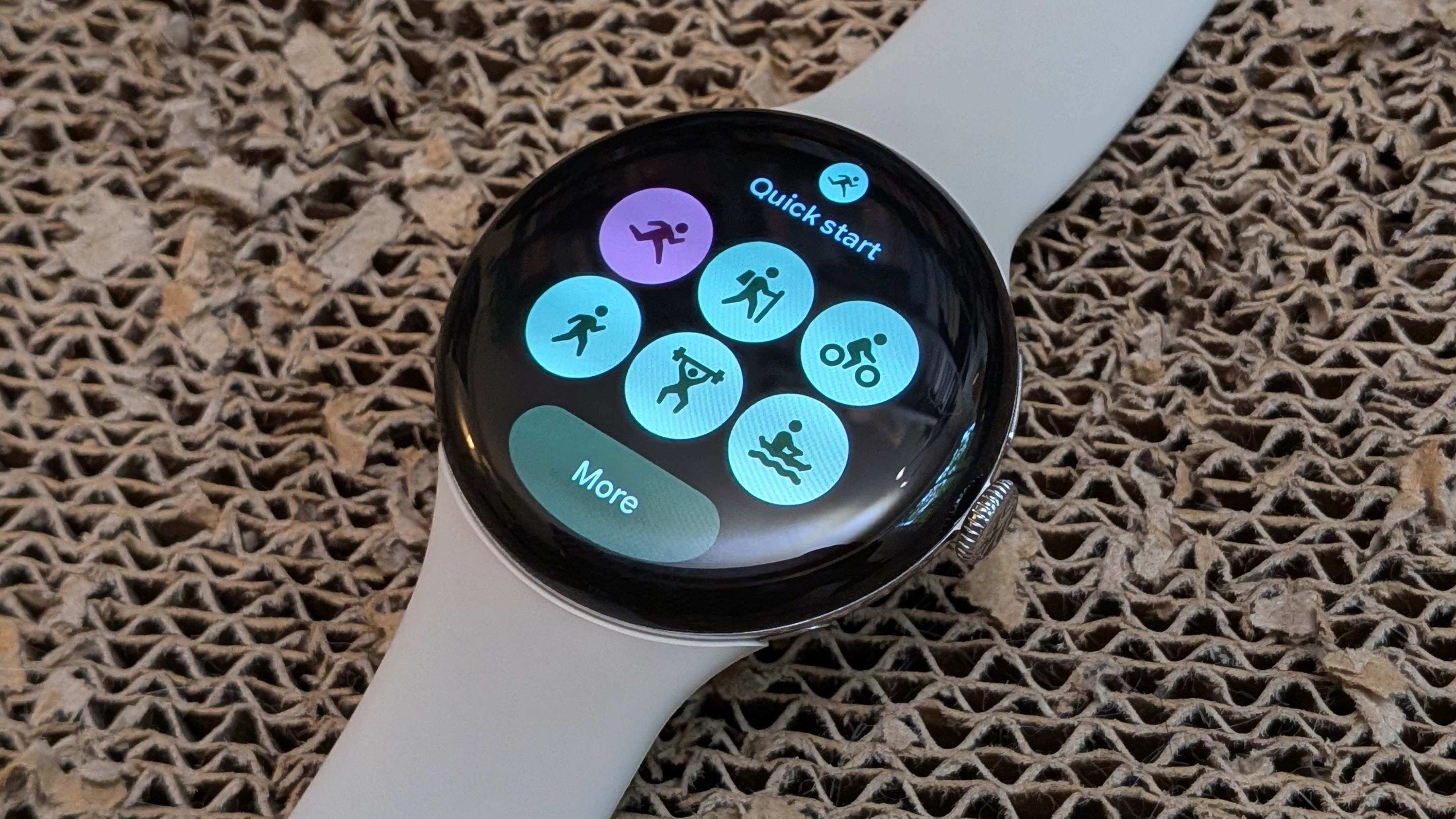
The Google Pixel Watch 4 has a familiar edgeless look, but it's the roundest model yet, with a domed Actua 360 display that physically curves underneath the glass. Despite that, it still measures 12.3mm thick, staying relatively flat against your wrist.
Plus, the Pixel Watch 4 weighs about the same as its predecessors, despite new components and extra battery capacity. The 45mm model weighs about 5.7g more than the 41mm, but the real difference may be higher depending on your band size.
Google says the Pixel Watch 4 features a 10% larger touchscreen and 16% smaller bezels than the Watch 3. Plus, it hits a bright 3,000 nits, matching the Galaxy Watch 8 and Apple Watch Ultra 2.
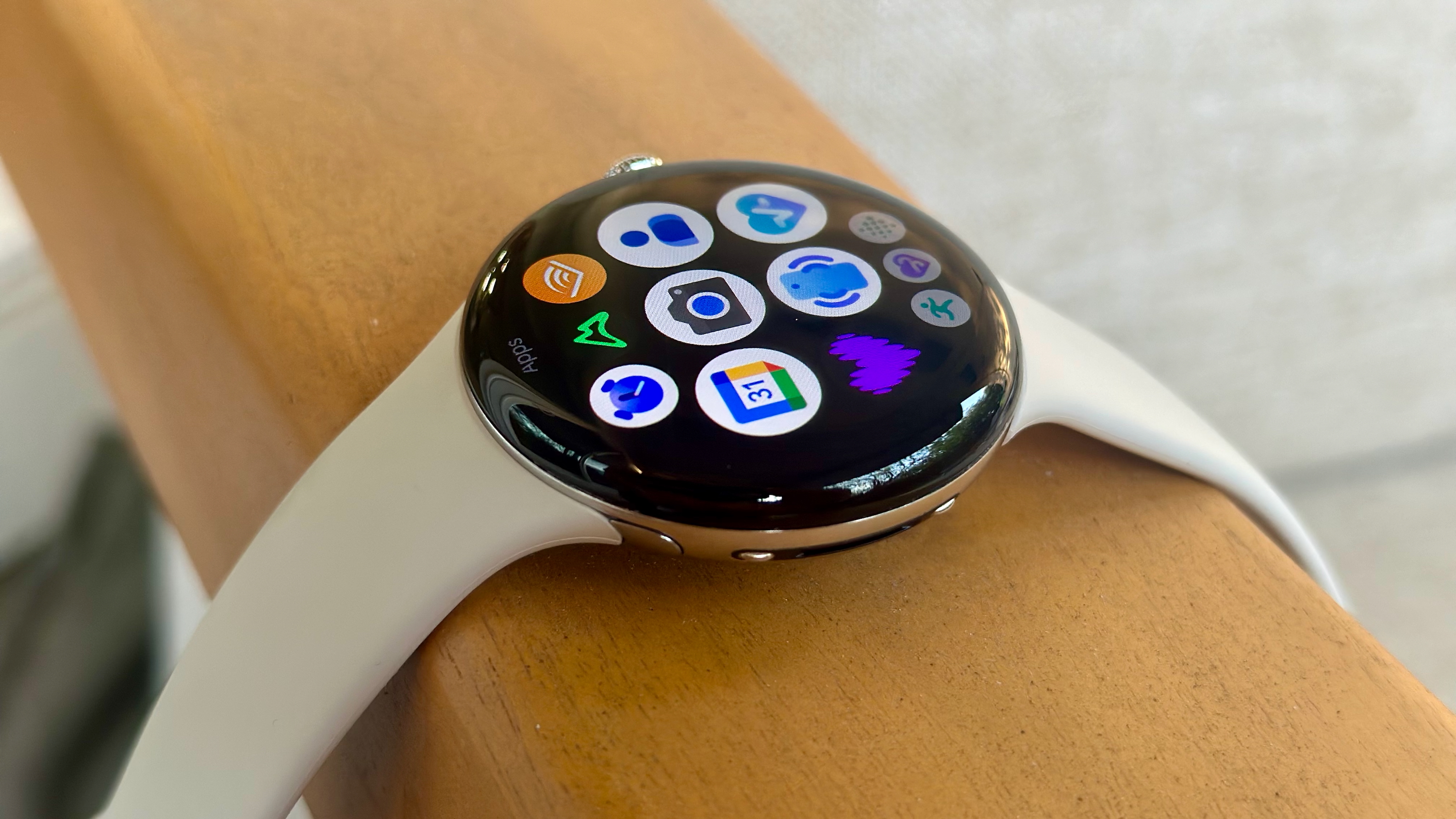
Unfortunately, this new display continues to use Gorilla Glass 5, while Samsung, Apple, and other competing brands rely on sapphire glass. You may want to invest in a screen protector.
Google claims the aluminum case is "aerospace-grade," so that will hopefully protect the internal components. And if you do run into issues with the display or battery, Google promises that the Watch 4 design was changed to be properly repairable (unlike the Watch 3), so you should be able to get it fixed.
As for other upgrades, Google says the Pixel Watch 4 has an upgraded haptics engine that makes notifications more noticeable, plus an upgraded speaker to make Gemini responses easier to hear.
Google Pixel Watch 4: Hardware and sensors
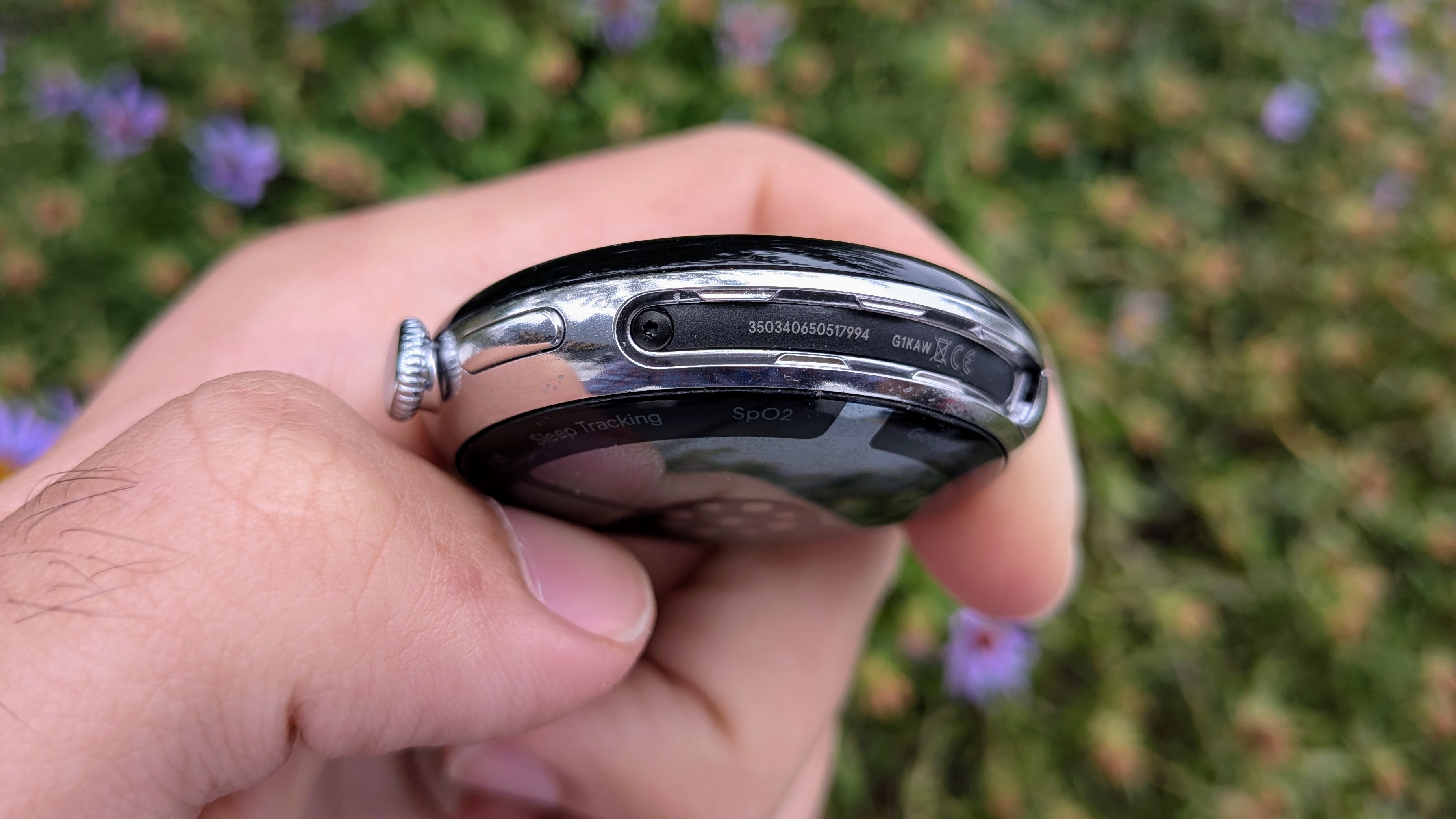
The Google Pixel Watch 4 has a new Snapdragon W5 Gen 2 chipset, but don't expect a major power boost: It uses the same 4nm SoC with four Cortex-A53 cores as the W5 Gen 1. But Google promises that its new M55 co-processor is "25% faster at half the power," which should help for speedier background tasks like notifications and health readings.
What this new chip does add is satellite messaging support, so you can message emergency responders with your GPS location if you're in trouble in a cellular dead zone. This satellite capability will initially be restricted to Pixel Watch 4 LTE models in the contiguous United States.
The Pixel Watch 4 also adds dual-frequency GPS for the first time. You'll get more accurate results in dense forests and urban canyons. Rivals like Samsung and OnePlus already have dual-band GPS in their watches, so we're gratified to see Google join their ranks.
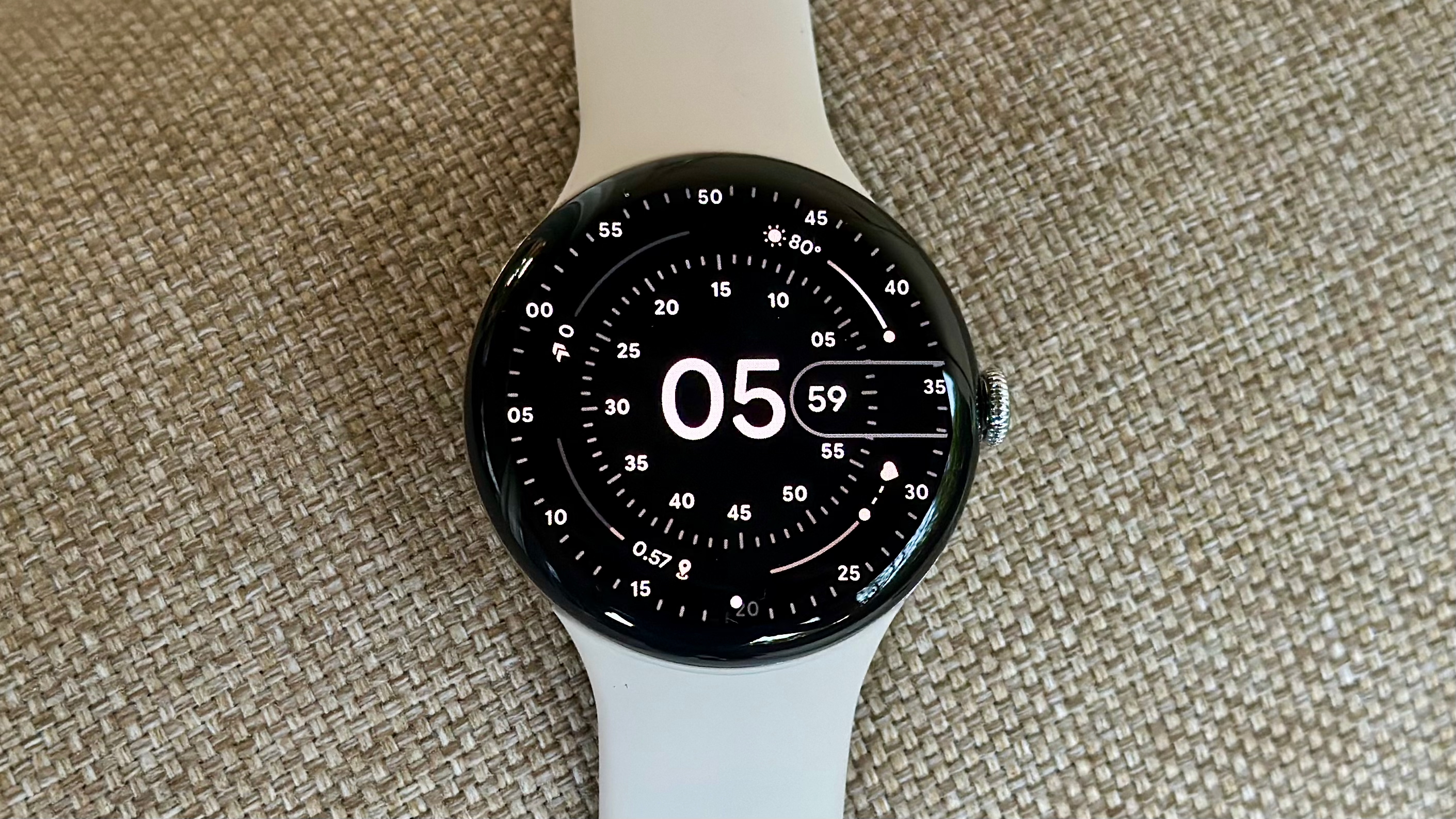
Google still has the same sensor suite as the past two models, tracking heart rate, sleep stages, blood oxygen, breathing rate, heart rate variability, body response to stress, and skin temperature. You also get Loss of Pulse detection in emergencies.
What's new? The Watch 4 has a new skin temperature sensor that tracks your current level against your baseline and warns if you might be getting sick.
In addition, Google promises that it has a new "advanced machine learning model" that's 18% more accurate for judging your time spent in each sleep stage.
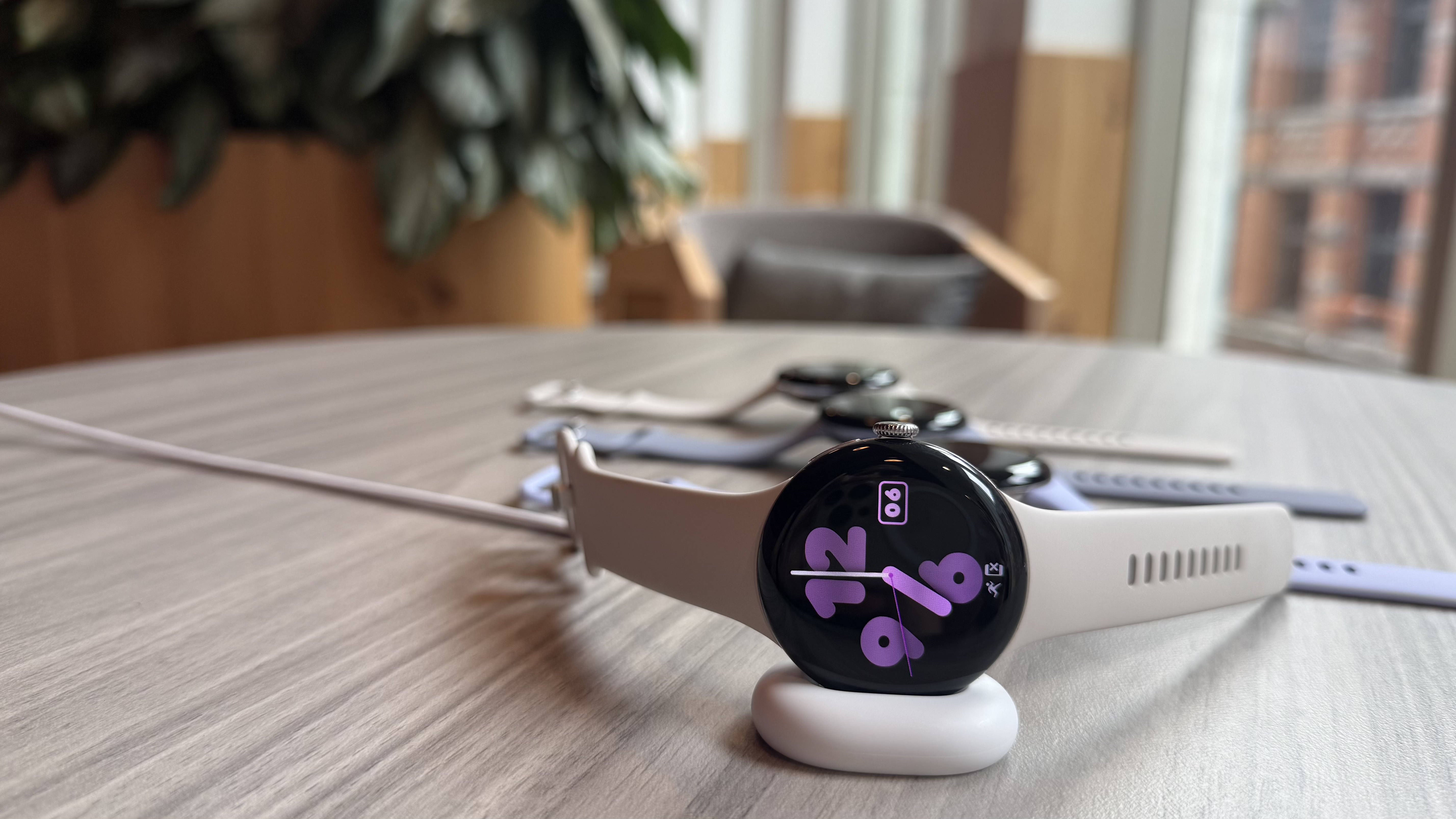
Google removed the charging pins in the sensor area and placed them on the Pixel Watch 4's left side, so it can mount on top of the Quick Charge Dock. This new system reportedly helped Google design it to be more repairable, and sped up charging times so it hits 50% power in 15 minutes, or 45–60 minutes to 100% depending on the case size.
Even better, both Pixel Watch 4 models last longer per charge than their Watch 3 predecessors. The 41mm Watch 4 delivers an extra six hours (30 hours with AOD), while the 45mm Watch 4 hits 40 hours with AOD. This is well short of the OnePlus Watch 3, but beats Samsung's 30-hour-with-AOD estimate for its Galaxy Watch 8 series.
Rounding out the list of Pixel Watch 4 vs. 3 changes, the Watch 4 has a more recent Bluetooth 6.0 standard, with better data transfer to and from your phone (among other technical improvements).
Google Pixel Watch 4: Software and fitness
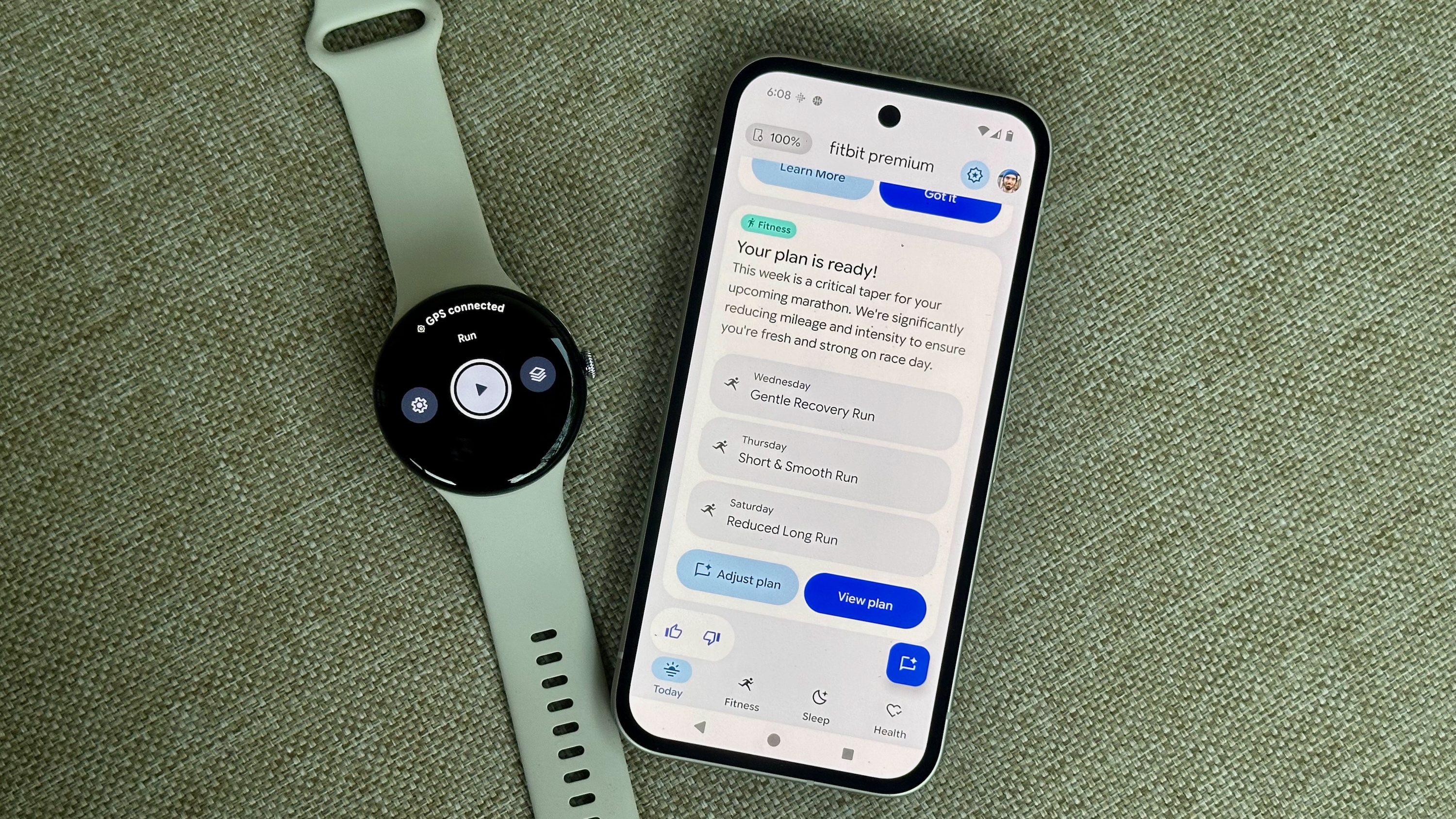
The Pixel Watch 4 launched with Wear OS 6 and is promised three years of updates through 2028. This version delivers the Material 3 Expressive redesign with improved Tiles, color theming throughout the UI, new watch faces (including third-party stores), and better battery efficiency.
Google has already added Gemini to previous versions of Wear OS, but the Pixel Watch 4 supports "Raise to Talk," which (as the name implies) lets you speak to Gemini without a button shortcut or "Hey Google" wake word. You just hold it up to your mouth and start asking questions!
Gemini on Wear OS supports LLM-backed responses and Extensions to other Google apps like Calendar, Maps, Tasks, and Home. Now, the Pixel Watch 4 has added on-device AI functions like tailored smart replies to messages that use "contextual information from apps across your device."
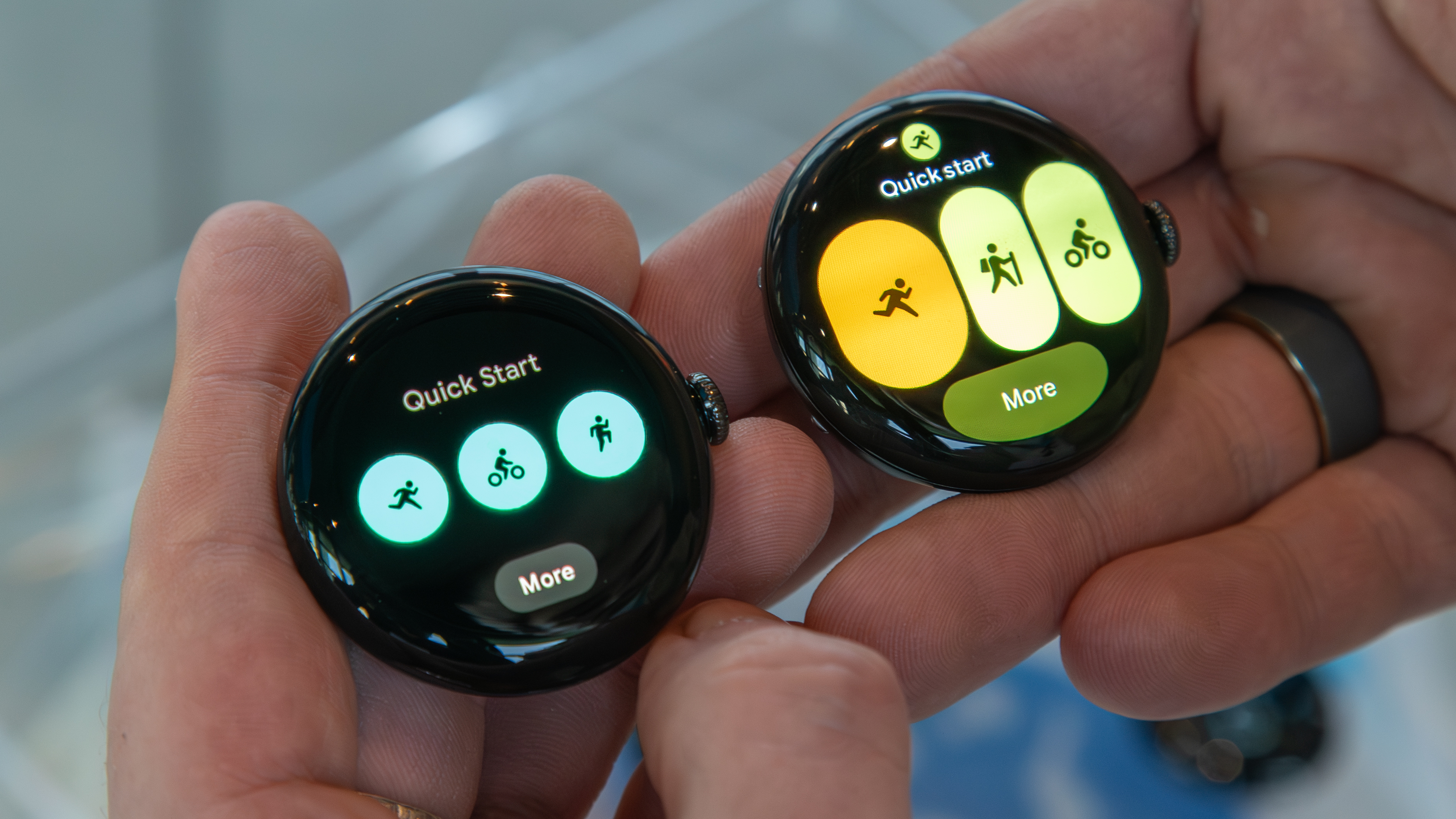
On the Fitbit front, Google is building on features introduced last year, like Run Coaching and Fitbit Cardio Load. Now, if you start working out but forget to log it, the Watch 4 will "use AI to automatically detect and classify your activity and send you a recap so you never miss out on your stats."
Cyclists are able to project their real-time stats from their Watch 4 onto their Pixel phone, which you can prop on your handlebars as an alternative to a bike computer. And the Watch 4 has added other exercise modes like pickleball and basketball for the first time.
Most intriguingly, Google launched a personal AI health coach backed by Gemini smarts alongside the Watch 4 in October 2025, with "proactive fitness and sleep coaching" and "on-demand guidance uniquely tailored to your goals and real-life circumstances. We're very curious to see if this AI coach will be smarter than other coach chatbots, such as the Garmin Connect Plus AI.
For more news and information on Google's latest smartwatch, check out our Ultimate Guide.







